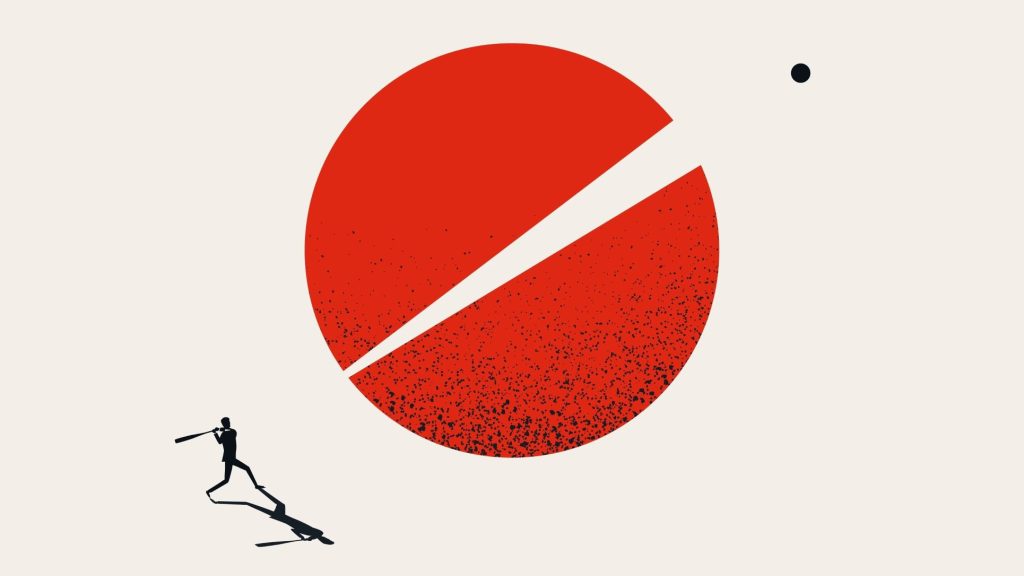The Road To Disruption

We’ve collaborated with a multitude of start-ups and scale-ups from vastly differing sectors in creating a brand language for them, and this means that no project is ever the same. These challenges force our team to investigate every crucial contextual issue with a clear, untainted, perspective. In turn this means we are forever challenging our own common ideals, with the processes and insights that gain the most traction forming our collective understanding of what makes a successful brand.
Despite these projects coming from divergent pathways, one common trait these fledgling companies have is the desire to be seen and heard in often crowded markets. How that is achieved can be down to a combination of an innovative product, a unique process of manufacture, a distinct brand personality, or a memorable purpose that resonates and drives the brand language.
In most cases their opinions as brands are at odds with the status quo within their market sector. They may be calling out unacceptable practices within the industry like Zora Chocolate, improving product quality and benefit like Burst and Blank Beauty, or they may be getting us to change purchasing behaviours for the better, based on sustainable manufacturing processes, like our friends at Grub Club. These brands are often named ‘disruptor’ brands, as they attempt to instigate change at some level within their sectors.
In order to stand out or go against the grain, it takes a lot of internal stamina to keep true to that vision once the brand language starts taking shape during the design process. In fast-paced market environments, a disruptor brand needs to instantly stand out to show difference. Creating that difference visually is by its nature, uncomfortable to see, as we are ideally developing something that hasn’t been done before in that sector. At the same time, as a founder, you are also dealing with the pressures of having to be commercially viable and satisfy investors.
As Fatima-Zohra, founder of the chocolate brand Zora which aims to highlight the benefit of West African cocoa as well as bringing equality issues with women workers in the region to the fore, eloquently puts it — “It’s like a dark space, that you really don’t know what you’re getting yourself into … and that’s what’s most terrifying.”
So, the biggest challenge as the brand owner, as the conceptual starts to turn into the tangible, is being brave and committed enough to maintain that viewpoint. A way to maintain that commitment is to trust the insights and direction that have been laid out at the beginning of any brand project and that form the fundamentals to the direction of the visual language and use that as a guiding star through this uncomfortable period of brand creation. If, as a brand guardian, you don’t agree or understand that direction, it is incredibly important to slow down the process and challenge at this point — and not further down the line where it becomes very difficult to adjust the footing. This will confront any worries head-on, create trusted solutions, and in turn develop confidence throughout the team in the brand direction going forward.
Once there is confidence in the brand direction, we tailor how it manifests itself by getting a comprehension of who the early adopters of the brand will be and why they would connect. How can we succinctly and successfully communicate the brand vision and product benefits to this defined market? If this isn’t rigorously considered, there is a danger of a massive misstep right from the start and the brand ends up being potentially overlooked and forgotten immediately.
I often use the Oatly example to illustrate this point to clients — a brand that existed before its recent rebellious incarnation, but previously had ‘blanded’ into the competitor landscape when first launched. A quiet brand voice and obvious packaging design from the start did nothing to define itself within a crowded market. However, it was only after it rebranded and its message became bolder and singular than its more conservative peers, that it connected with a more environmentally aware audience used to that vernacular. The benefits of oat-based milk now not only got heard, but Oatly and similar product brands got further traction into a wider public domain, as a truly viable alternative to dairy milk.
For instance, when we worked with Grub Club — a sustainable insect-based pet food company – our aim was to move the conversation away from the topic the founders were focused on and bring in what the consumer was looking for when buying pet food. We wanted to move away from similar brand narratives that their immediate competitors were having, as well as creating quicker more meaningful connections with the core audience.
As Alessandro Di Trapani, one of the co-founders, stated when reflecting on this part of the process; “we (knew that) sustainability is our core mission and reason for existence as a company, but people don’t necessarily buy pet food because it’s sustainable. People buy pet food because it’s good for the dog, or good for the cat.
“This is something we spent a lot of time on when we developed the brand and the messaging and positioning, because unless it’s really good for the dog you’re not going to buy it. It’s about understanding the direction you need to go. It’s about understanding the customer at the end of the day, and understanding when to dial various value propositions up or down.”
So in summary, when developing a ‘disruptor’ brand that in its essence has to stand out and behave differently to its peers in order to be seen, the three most crucial things to remember are:
- Be singular, brave and committed to the brand direction. Understand the insights and strategy that form the bedrock to this direction.
- Understand the industry tropes, trends and semiotics. You have to know how to read the sector landscape so you can formulate your own POV that will resonate.
- Define your early adopters. What will they respond to? What will resonate? How can you connect to them and be part of their lifestyle choices?
These traits create a brand that is powerful in its fabric and with longevity to grow and adapt true to its vision and mission. It’s important to get this language right, ideally from the start, as it’s the brand that defines who you are in the eyes of the public and that is what you are then remembered for within the industry sector you inhabit.
Nima Falatoori is Creative Director at ico Design.
Check out ico Design’s Lost in Founderland podcast where they discuss this and other topics with founders and entrepreneurs: https://www.lostinfounderland.com/




